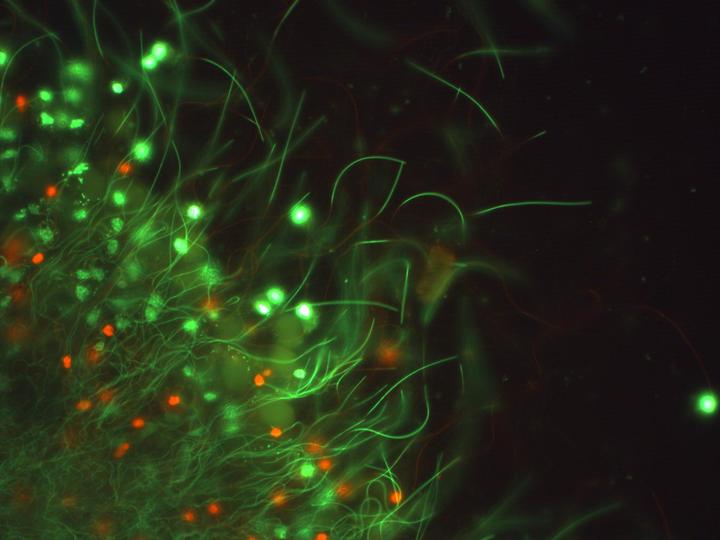 Sperm from a human bed bug stained to reveal their viability.
Sperm from a human bed bug stained to reveal their viability.
Abstract
The causes and consequences of variation in sperm quality, survival and ageing are active areas of research in ecology and evolution. In order to address these topics, many recent studies have measured sperm viability using fluorescent staining. Although sperm viability staining has produced a number of interesting results, it has some potential pitfalls that have rarely been discussed. In the present paper, I review the major findings of ecology and evolution studies employing sperm viability staining and outline the method’s principle limitations. The key problem is that the viability assay may itself kill sperm, which is likely to confound many common experimental designs in addition to producing artificially low estimates of sperm viability. I further suggest that sperm number should be routinely measured in sperm viability studies, as it may be an important but overlooked source of spurious results. I provide methodological advice on sperm viability staining aimed at minimising artefacts and producing robust conclusions, and discuss possible avenues for future research.